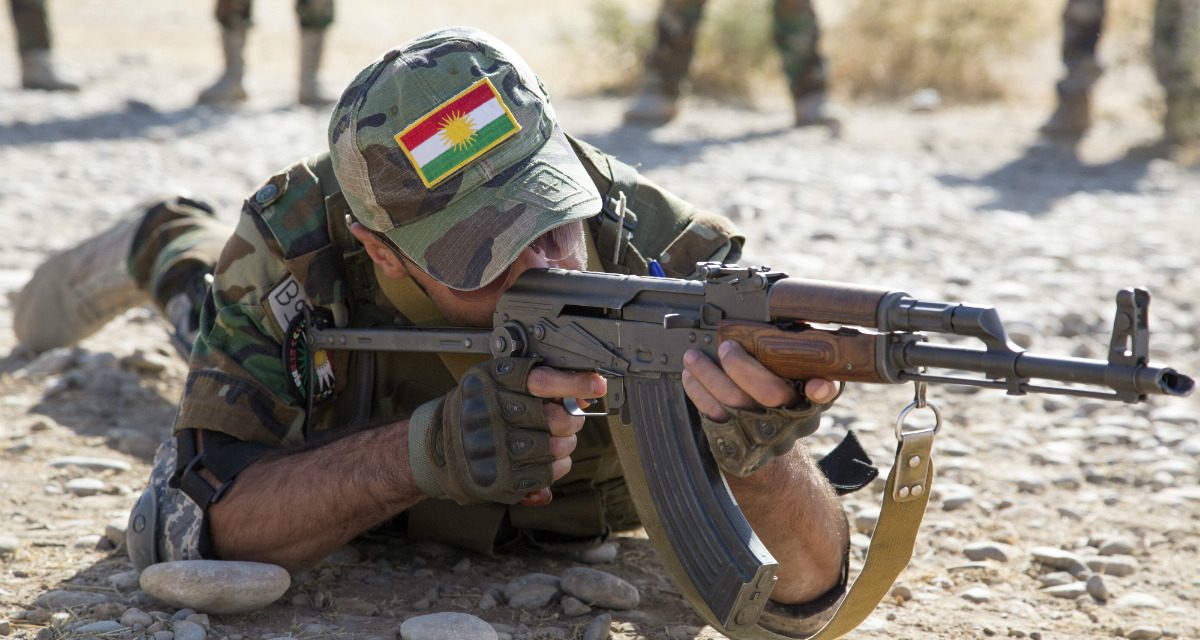The first pickup laid down suppressive fire with its .50-caliber heavy machine gun; the other pickup—called a “technical” in the many places such makeshift combat vehicles are found—then advanced to the next fold in the sand, braked hard and took up the thundering cadence with its own weapon. The first technical used that suppression to resume its advance, and the two vehicles continued their alternating progress down a football field-length of Iraqi desert.
The principles of fire and movement were developed by German stormtroopers in World War I, yet were new to these Kurdish Peshmerga fighters, recently trained by Western Special Forces. The multinational observers clapped after the demonstration, held near Mosul Dam during the war with the Islamic State group.
Does this training help in combat, though? “Oh yes, we were surprised, but it really worked,” one Peshmerga told me after the demonstration, detailing a recent attack the Peshmerga made on Islamic State fighters. “We can launch attacks now that before cost lots of blood.”
This article is part of MWI’s “Dispatches” series, featured in ARMY Magazine. Read it in full here.
Image credit: Sgt. Tracy McKithern, US Army



Training Partners obviously has existential advantages although I do wonder how much of this has to do with the “Overwhelming firepower” phenomenon. Is it not true that most Partner soldiers refuse to fight in the face of massive firepower from AK-47s, RPGs, RPDs, PKMs, Recoilless Rifles, and heavy machine gun fire? Armed with M-16s, AK-47s, G3s, and other small arms, how well a counter-attack could Partner Soldiers present? At best, some of these soldiers may receive a heavy bulky TOW ATGM or perhaps a M72 LAW.
Too bad the U.S. Army doesn’t have any M48 or M60 MBTs to export, nor does it have any light to medium tanks and AFVs that are simple and not technologically or engineeringly complex. The need for armored firepower above the HMMWV, M113, and M1117 grows greater. The M1117 can be armed with a 90mm cannon IF the DoD doesn’t fear the tank shells being used as IEDs. Seriously, the U.S. has no light fully armored vehicles to give to these Allied nations besides HMMWV and surplus MRAPs, also armed with heavy machine guns. Most of our exports are Softskinned vehicles.
It’s this “firepower overmatch” that is still a concern for the US DoD. Fortunately, SOCOM is developing domestic copies of the AK-47 and RPG so perhaps our Partner Allied soldiers might be able to receive some of these copied weapons to enhance their arsenal. Therefore in a firefight, our Allied soldiers in these nations are at an effective tactical disadvantage.
How then are West Point officers going to manage, train, and contend with these threat overmatching firepower issues? U.S. soldiers and officers can call in artillery, CAS, helicopters, armor, and other firepower reinforcements to deal with overwhelming threats. In most cases, Partner Nation soldiers do not have the independent resources or higher-levels of firepower outside of Western assistance and influence to operate alone. Obviously, this can lead to Mission Creep and deeper influence for U.S. Forces.